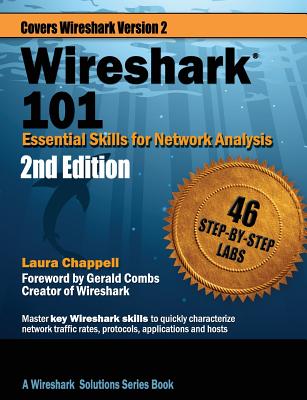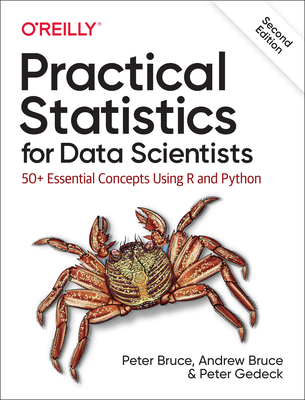Professional Scrum Product Owner Training in Johnson City
|
We offer private customized training for groups of 3 or more attendees.
|
||
Course Description |
||
| In the Professional Scrum Product Owner course, explore and learn to apply the accountabilities of the Product Owner and the principles of Professional Scrum. Gain an understanding of the pivotal role the Product Owner plays in bridging strategy and agile product management in order to help the Scrum Team create valuable products.
Course Length: 2 Days
Course Tuition: $790 (US) |
||
Prerequisites |
|
Course Outline |
|
Agile Product Management
Reasons to Pursue Agility
Agile Product Managers Have a Product
Mindset
The Bigger Picture
Product Management Activities
Product Management Encapsulates Many
Things
Product Owner Is an Agile Product Manager
An Entrepreneurial Product Owner
Techniques for Modeling Business Strategy
Business Model Canvas
Lean Canvas
Value Proposition Canvas
Business Strategy
Boiler Plate Warning
Techniques For Creating A Product Vision
Innovation Games Product Box
Product Vision Template
Business Problem Statement
Product Owner and Technology
Strategic Alignment Index
Discontinuing Products Is Not What Kills You
Value-Driven Development
What is value?
For organizations, value is…
Delivering Value
A Release Is Needed to Realize Value
Traditional Development Delays the Realization of Value
Business Value Over Time
Business Value Over Time – Optimized
Delivering Value
How do you measure?
Information Value Neutrality
The Right Metrics
Value Measures
Product Variations
Innovation Rate
On-Product Index
Usage Index
Securing Success by Securing Scope?
Installed Version Index
The Right Metrics
Scrum Theory & Empiricism
When Will It Be Ready?
The Complexity of Product Development
The Predictability of Product Development
The Complexity of Product Development
Situation Dictates the Type of Process
Empirical Processes Require Trust & Courage
Scrum Values
Take Away – Scrum Theory & Empirical Process Control
The Scrum Framework
Definition of Scrum
What is needed for Scrum?
Roles: Each One Has a Specific Accountability
Fitting the pieces together
Roles, Artifacts and Events in the Scrum Framework
Exploring the purpose of a Product Owner
The Rewrite Fallacy
Key Points for the Product Owner
Key Points for the Product Owner
The Product Owner / Development Team Relationship
Stakeholders – Who Are They and What Do They Want?
What Is a Scrum Sprint?
Sprint Goal
Some Sprint Goals
Sprint Planning Meeting Flow
Product Owner and Sprint Backlog
Attributes of a High-performing Team
Cancelling a Sprint
A Sprint is a Feedback Loop
Flow of the Sprint Review Meeting
Definition of “Done”
Increment Requires Transparency
Increment Grows Over Time Iteratively – Always Done
Sprint Retrospective
Can one product owner possibly do it all?
One Product Owner Can Do It All, with Help and Thought
Product Owner Role
Product Backlog Management
Levels of Specification
Characteristics of a Product Backlog
Use Product Backlog to Maintain a Roadmap
Managing the Vision, Value and Validation Flow using Kanban
Valid Product Backlog Items
The Three C’s of User Stories
User Story
Popular User Story Template
If Not Precise Enough, Split Them
Refined to Ready
Acceptance Criteria
A/B Test and Technical Spike
Story Mapping
Create a Product Backlog
Product Backlog Supports Emergent Architecture Development
Architecture Changes
How Do You Prioritize Work?
Product Backlog Order Influenced by Many Factors
Techniques for Product Backlog Ordering & Value
Product Backlog Ordering
Map Product Backlog Items to Value Proposition
Release Planning
A Release Serves to Actually Deliver Value
Some Reasons Are Better Than Others
Release Strategies
Customer Absorption Is One Constraint
Build Plan as Needed
Techniques for Estimating Product Backlog Size
Estimating Size
Velocity Is an Option to Measure Progress
When Will Item “A” Likely Ship?
Monitoring Progress and Uncertainty
Undone Work & Technical Debt
The impact of Technical Debt on future Value
Good Velocity
Refinement
Closing
|
Course Directory [training on all levels]
- .NET Classes
- Agile/Scrum Classes
- AI Classes
- Ajax Classes
- Android and iPhone Programming Classes
- Azure Classes
- Blaze Advisor Classes
- C Programming Classes
- C# Programming Classes
- C++ Programming Classes
- Cisco Classes
- Cloud Classes
- CompTIA Classes
- Crystal Reports Classes
- Data Classes
- Design Patterns Classes
- DevOps Classes
- Foundations of Web Design & Web Authoring Classes
- Git, Jira, Wicket, Gradle, Tableau Classes
- IBM Classes
- Java Programming Classes
- JBoss Administration Classes
- JUnit, TDD, CPTC, Web Penetration Classes
- Linux Unix Classes
- Machine Learning Classes
- Microsoft Classes
- Microsoft Development Classes
- Microsoft SQL Server Classes
- Microsoft Team Foundation Server Classes
- Microsoft Windows Server Classes
- Oracle, MySQL, Cassandra, Hadoop Database Classes
- Perl Programming Classes
- Python Programming Classes
- Ruby Programming Classes
- SAS Classes
- Security Classes
- SharePoint Classes
- SOA Classes
- Tcl, Awk, Bash, Shell Classes
- UML Classes
- VMWare Classes
- Web Development Classes
- Web Services Classes
- Weblogic Administration Classes
- XML Classes
- Introduction to Spring 6, Spring Boot 3, and Spring REST
15 December, 2025 - 19 December, 2025 - See our complete public course listing
Agile/Scrum Uses & Stats
|
Difficulty
|
Popularity
|
Year Created 2001 |
|
Pros
Faster Deployment of Solutions
Gives Every Team Member a Purpose
Keeps the End Goal in Mind at Every Level
Promotes Flexibility in Order to Adapt
Faster Detection of Issues and Defects |
Cons
Can Act As a Band-Aid to Bigger Problems
Can Create a Micro-Managed Environment
Not Everyone Is On Board
Push for Higher Performance
Not Well-Suited for Every Project |
| Agile/Scrum Job Market |

Average Salary
|

Job Count
|

Top Job Locations
Agile and SCRUM methodologies are practiced mostly in larger organizations that have cross-platform teams that need to be on the same page. Adoption rates vary in different industries.
Industry Agile Adoption Rate Software (ISV) 23 percent Financial services 14 percent Professional services 12 percent Insurance 6 percent Healthcare 6 percent Government 5 percent Telecoms 4 percent Transportation 4 percent Manufacturing 4 percent |
|
Complimentary Skills to have along with Agile/Scrum
Agile Methodologies and Frameworks include: ASD - DevOps - DAD - DSDM - FDD - IID - Kanban - Lean - SD - LeSS - MDD - MSF - PSP - RAD - RUP - SAFe - Scrum SEMAT TSP UP XP The Standards and Bodies of Knowledge Include: BABOK - CMMI - IEEE standards - ISO 9001 - ISO/IEC standards - PMBOK - SWEBOK - ITIL |






